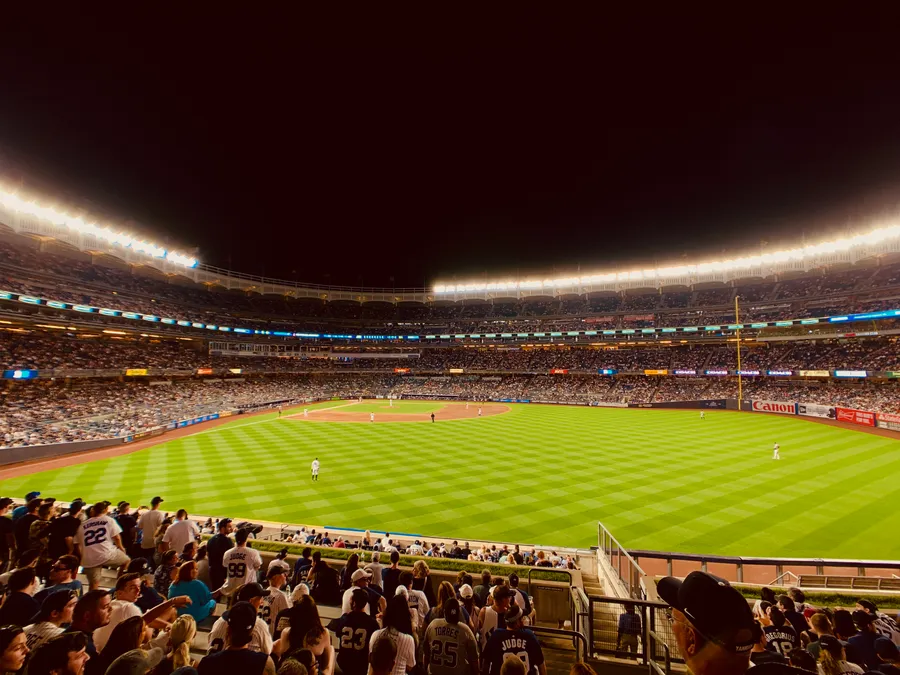
Stadiums have evolved far beyond mere venues for baseball games; they’re now immersive experiences that blend cutting-edge architecture with advanced technology. Modern designs prioritize fan comfort and engagement, featuring spacious seating, superior sightlines, and interactive elements that keep spectators connected throughout the game.
With integrated screens, mobile app features for seamless ordering, and social spaces, today’s stadiums ensure every fan not only watches the game but becomes an integral part of the experience, transforming the outing into an unforgettable event.
Architectural Innovations
When it comes to modern stadium design, spacious and comfortable seating is a game-changer. Many new stadiums feature wider seats that incorporate ergonomic designs, providing fans with the comfort they need for a long game.
Gone are the days of cramped bleacher seating; today’s stadiums offer varied options, from general admission areas to luxurious suites and exclusive club seating. This diversity not only caters to different budgets but also enhances everyone’s overall game-day experience.
Improved sightlines are another crucial aspect of contemporary stadium architecture. Designers carefully strategize the elevation and angle of seating to ensure that every fan has an unobstructed view of the action.
Circular or asymmetrical designs help create a more intimate atmosphere, allowing spectators to feel closer to the field, regardless of where they are seated. These thoughtful innovations play a significant role in transforming a simple baseball game into an engaging and memorable outing.
Technology Integration
In today’s stadiums, technology plays a pivotal role in enhancing the spectator experience, and high-definition video screens are at the forefront of this evolution.
These large, crystal-clear displays not only showcase replays and highlight moments but also feature multi-screen setups that allow fans to view different angles of the action and access real-time game statistics.
Imagine watching a critical play unfold while simultaneously getting insights on player stats or upcoming matchups—this level of engagement keeps fans informed and excited throughout the game.
Additionally, augmented reality (AR) and virtual experiences are becoming increasingly popular in modern stadiums. AR applications can transform pre-game and in-game activities, allowing fans to interact with their environment in innovative ways, such as viewing player statistics overlaid on their favorite players during warm-ups.
Virtual tours of the stadium or immersive experiences with player interactions offer fans a chance to feel closer to the action, making each visit more than just a game—it’s an adventure.
Fan Engagement Features
One of the most exciting developments in modern stadiums is the integration of interactive mobile apps that enhance the overall experience for attendees. These user-friendly apps allow fans to seamlessly purchase tickets and gain entry into the stadium without the hassle of waiting in long lines.
Imagine arriving at the stadium and, with a few taps on your phone, having your tickets scanned instantly! But it doesn’t stop there; in-app ordering for food and merchandise is a game changer. Fans can browse menus, place their orders, and have their tasty snacks or team gear delivered directly to their seats, minimizing interruptions during the game.
Additionally, stadiums are increasingly featuring designated fan zones that encourage interaction among spectators. These vibrant social areas are perfect for pre-game activities and entertainment, providing fans with opportunities to play games, participate in contests, or even meet their favorite mascots.
For those interested in betting, many apps are incorporating features that allow fans to place bets and view live odds. For example, if you’re on a Colorado Rockies game, you can place multiple Rockies parlay bets or other types of wagers. This adds an extra level of excitement and engagement, further elevating the overall experience.
Sustainability Considerations
As modern stadiums embrace sustainability, eco-friendly materials and construction practices have taken center stage. Builders are now opting to recycle locally sourced materials, reduce carbon footprints, and promote regional economies.
This not only helps in creating a greener environment but often results in distinctive architectural styles that reflect local culture. Additionally, energy-efficient technologies, such as solar panels and LED lighting, are making a significant impact on operational costs. By harnessing renewable energy sources, stadiums can drastically reduce their energy bills while lowering their environmental impact.
Creating a sustainable, family-friendly environment is also a top priority for stadium designers. This includes plentiful green spaces where families can enjoy picnics and engage in activities, enhancing the overall outing experience.
Moreover, waste management systems that encourage recycling and composting are becoming standard, ensuring that fans can enjoy their games while being mindful of their responsibilities toward the environment.
Conclusion
The evolution of stadium design has transformed the baseball experience into a multifaceted event that prioritizes comfort, technology, and sustainability. As these venues continue to innovate, they not only enhance fan engagement but also reflect a commitment to environmental stewardship, making each outing memorable and responsible.
